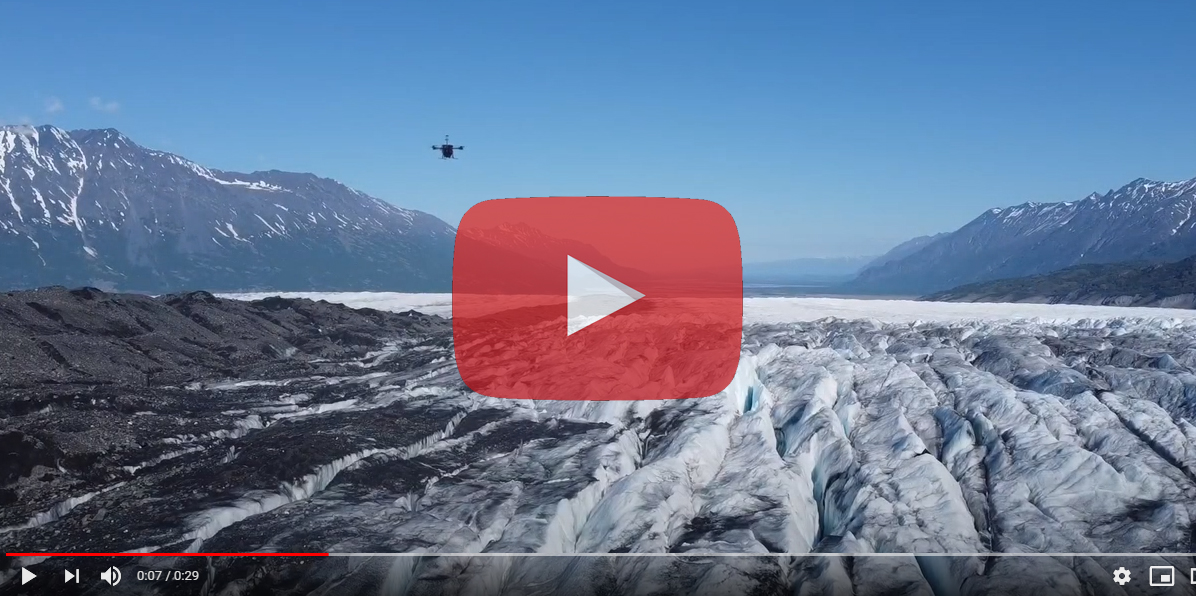
Click here to watch: https://www.youtube.com/watch?v=o8lxUyxva3c
Astrobotic successfully field-tested advanced navigation techniques that could be used by the next generation of spacecraft to map and target landings on icy planetary bodies, like Europa or Enceladus.
Under a NASA Small Business Technology Transfer (STTR) Phase II-X contract, Astrobotic engineers travelled to Alaska to test AstroNav™, a software framework for multi-sensory robotic navigation and mapping. During this four-day mission, a custom drone with AstroNav software onboard was flown over rugged textures and dirty ice on Knik Glacier, 60 miles east of Anchorage, Alaska.
“Unlike the Earth or Moon, icy moons in the outer solar system have no existing map data available, and their icy terrain is difficult to robotically map because of their reflective properties. AstroNav utilizes cameras, LiDAR [scanning lasers], and Astrobotic software to build an accurate, 3D map of an area in real time. Think of it like a bat using sound to ‘see,’ but with light,” says Andrew Horchler, Chief Research Scientist at Astrobotic. “This could enable a spacecraft to navigate relative to this map, identify potential hazards, and select a safe landing site on planetary bodies that have not been previously mapped.”
Extensive testing is critical for AstroNav to empower spacecraft to explore unmapped, GPS-denied environments such as lunar skylights, lava tubes, and icy moons. Testing campaigns are key to overcoming challenges like ice and transitions between light and dark environments. In Alaska, Astrobotic’s goal was to leverage the company’s state-of-the-art simultaneous localization and mapping (SLAM) software to optimally fuse multiple types of sensors in real time.
Over four days of testing at three different sites on Knik Glacier, the team completed 15 successful flights up to altitudes 100 meters above the icy surface. From the data collected above the glacier, the system was able to track terrain with high accuracy over trajectories relevant to a descent and landing scenario at an icy moon. Additional analysis will provide deeper insights into autonomous landing system for unmapped bodies.
This research builds on Astrobotic’s ongoing hazard detection and avoidance systems for its Griffin Mission One program carrying NASA’s Volatiles Investigating Polar Exploration Rover (VIPER) in 2023. When completed, these combined technologies will enable landed robotic missions to outer bodies without a precursor mission, rapidly advancing science and exploration goals while expanding humankinds’ understanding of the solar system.


